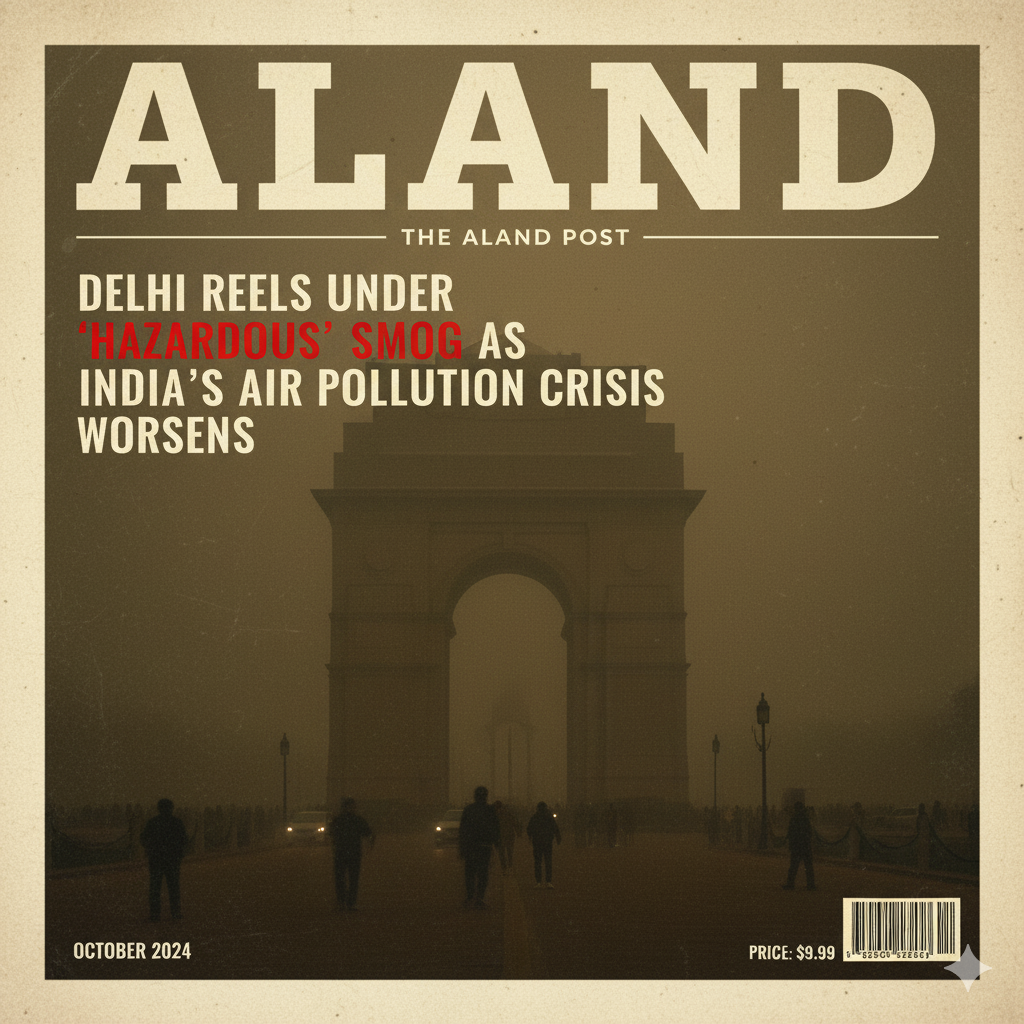Delhi Reels Under 'Hazardous' Smog as India's Air Pollution Crisis Worsens
Published Date: 21 Oct, 2025
NEW DELHI—India is once again facing a severe and debilitating air quality crisis, with the northern plains, centered on the capital region of Delhi, suffocating under a blanket of toxic smog. Recent days have seen the Air Quality Index (AQI) spike into the "hazardous" category, triggering emergency measures and raising global alarm over public health.
The AQI in the National Capital Region (NCR) has repeatedly exceeded the 450 to 500-mark. These levels represent extreme danger—up to 30 times the safe limit set by global health organizations—and pose a severe risk of immediate illness for all residents.
The recurring crisis is the result of a convergence of seasonal and systemic factors:
Agricultural Fires: The peak season for stubble burning in the agricultural states of Punjab and Haryana is a major contributor, with satellite images showing thousands of fire incidents creating vast smoke plumes that drift into Delhi.
Local Emissions: Construction dust, vehicular exhaust from the country’s burgeoning fleet of vehicles, and emissions from coal-fired power plants create a dense, localized concentration of fine particulate matter (PM2.5).
Winter Weather: Cold, heavy air during the winter season acts as a lid, trapping these pollutants close to the ground and preventing dispersal.
Emergency Response and Public Health Impact
In response to the emergency, authorities have been compelled to invoke the Graded Response Action Plan (GRAP) measures, including ordering the temporary closure of all non-essential construction activities and shutting down schools for several days.
The human cost is mounting. Leading hospitals and medical professionals report an overwhelming influx of patients with acute respiratory problems, including chronic obstructive pulmonary disease (COPD), severe asthma flare-ups, and lung infections. The pollution is also linked to increased risks of heart disease and premature death across the population.
While long-term solutions—such as transitioning to cleaner fuels, upgrading industrial technologies, and developing permanent solutions for stubble management—remain the stated goal, environmental experts criticize the reliance on last-minute, short-term bans.
As the nation braces for the worst of the winter smog, millions of citizens are dependent on expensive air purifiers and medical-grade masks to navigate the polluted environment, underscoring the urgency for India to find a comprehensive, year-round strategy to tackle its life-threatening air pollution crisis.
Date: 21 Oct, 2025

